10 Best Herbal Creams For Bee Sting
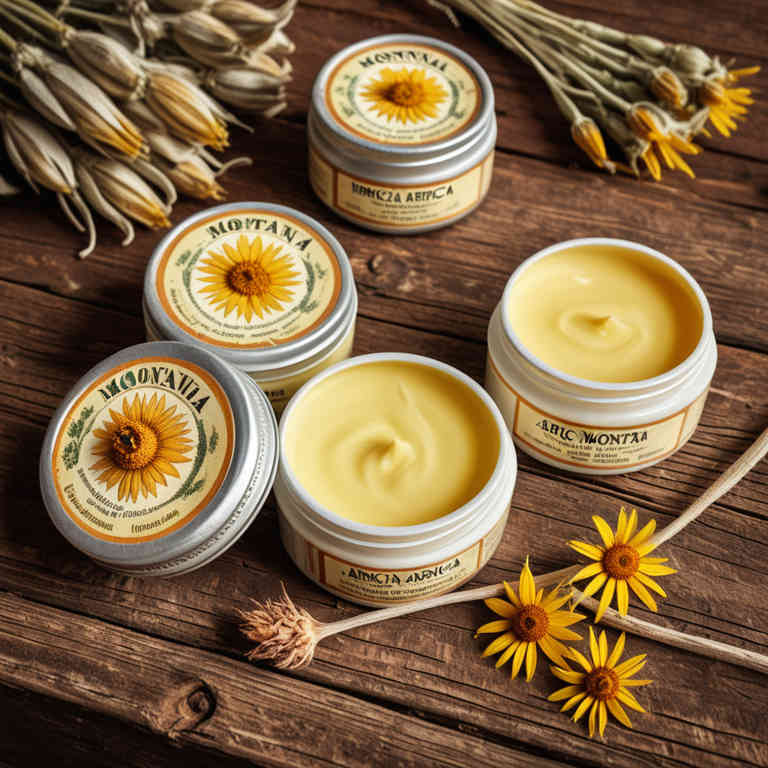
Herbal creams for bee stings are natural remedies that can help alleviate pain, swelling, and irritation caused by bee venom.
These creams often contain ingredients like aloe vera, chamomile, and calendula, which have anti-inflammatory and soothing properties. They work by reducing the body's inflammatory response and promoting skin healing. Many people prefer herbal creams over conventional treatments due to their gentle and holistic approach.
However, it's important to consult a healthcare professional if the sting leads to severe reactions or infection.
FREE Herb Drying Checklist
How to make sure every batch retains maximum flavor, color, and aroma without the risk of mold or over-drying. Eliminate guesswork and trial-and-error, making herb drying faster, easier, and more efficient every time.
Table of Contents
1. Calendula officinalis

Calendula officinalis, commonly known as pot marigold, is a popular herbal ingredient used in the formulation of creams designed to alleviate symptoms of bee stings.
These creams often contain calendula extract, which is renowned for its anti-inflammatory and antiseptic properties that can help reduce redness, swelling, and irritation caused by bee stings. The soothing effects of calendula may also promote faster healing of the affected skin area. When applied topically, calendula-based creams can provide a gentle and natural alternative to conventional treatments.
However, individuals with allergies to plants in the Asteraceae family should exercise caution when using these products.
2. Hypericum perforatum
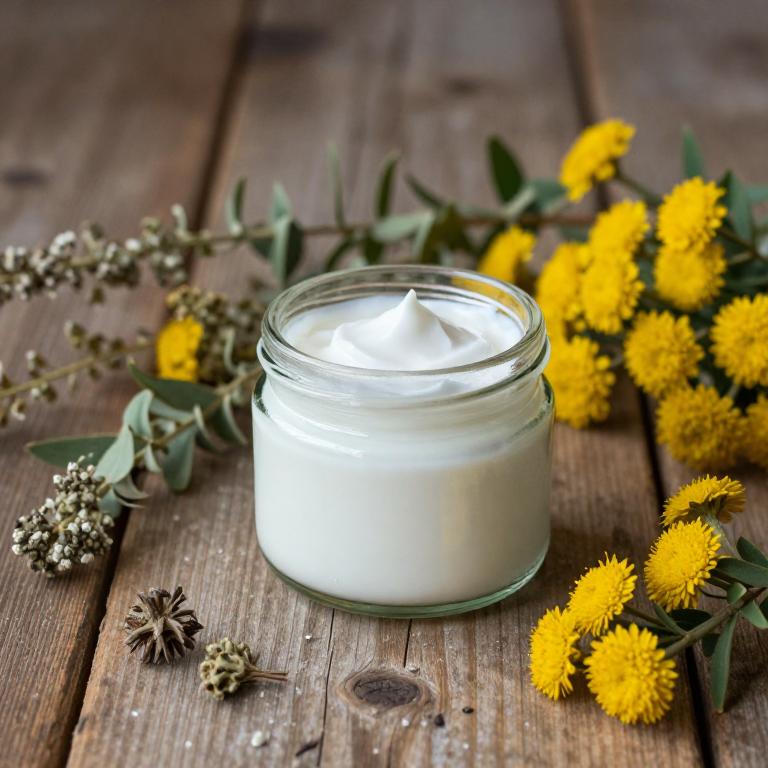
Hypericum perforatum, commonly known as St. John's Wort, is often used in herbal creams to alleviate the symptoms of bee stings due to its anti-inflammatory and antiseptic properties.
These creams typically contain extracts of the plant's dried flowers, which are known to reduce swelling, redness, and pain associated with insect bites. The active compounds in Hypericum perforatum, such as hypericin and flavonoids, help to soothe the skin and promote healing by inhibiting inflammatory responses. When applied topically, these creams can provide quick relief and prevent infection from the venom introduced by the bee.
However, individuals should consult a healthcare provider before using St. John's Wort products, especially if they are taking other medications, as it can interact with certain drugs.
3. Urtica dioica
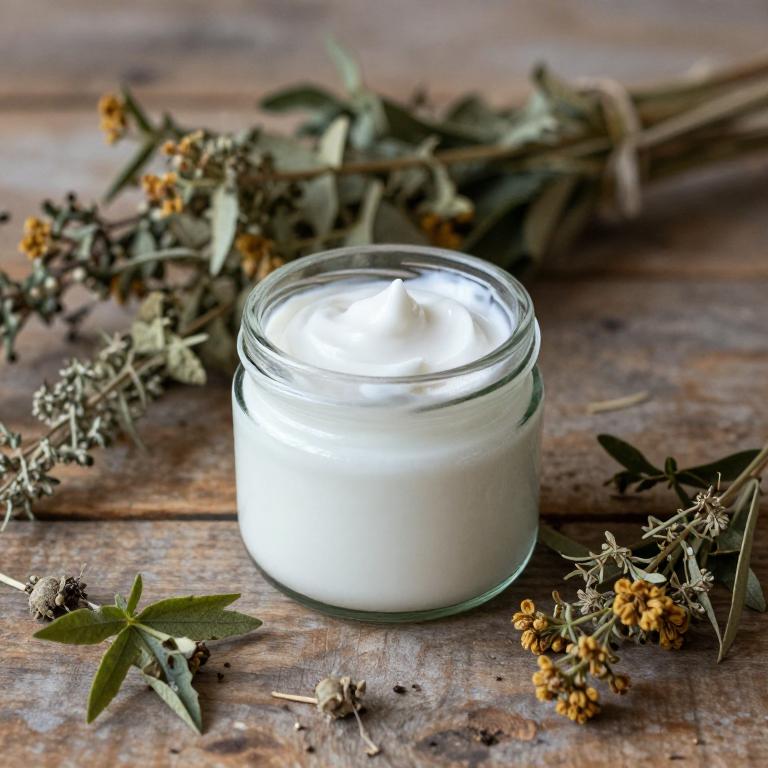
Urtica dioica, commonly known as stinging nettle, is a plant that has been traditionally used for its anti-inflammatory and soothing properties.
Herbal creams containing Urtica dioica are often recommended for alleviating the pain and irritation caused by bee stings due to their natural analgesic and antihistamine effects. These creams can help reduce redness, swelling, and itching by promoting skin healing and calming the inflammatory response. The active compounds in Urtica dioica, such as histamine and formic acid, may also neutralize the venom from bee stings.
When applied topically, these creams provide a natural and effective alternative to conventional treatments for minor bee sting discomfort.
4. Aloe barbadensis
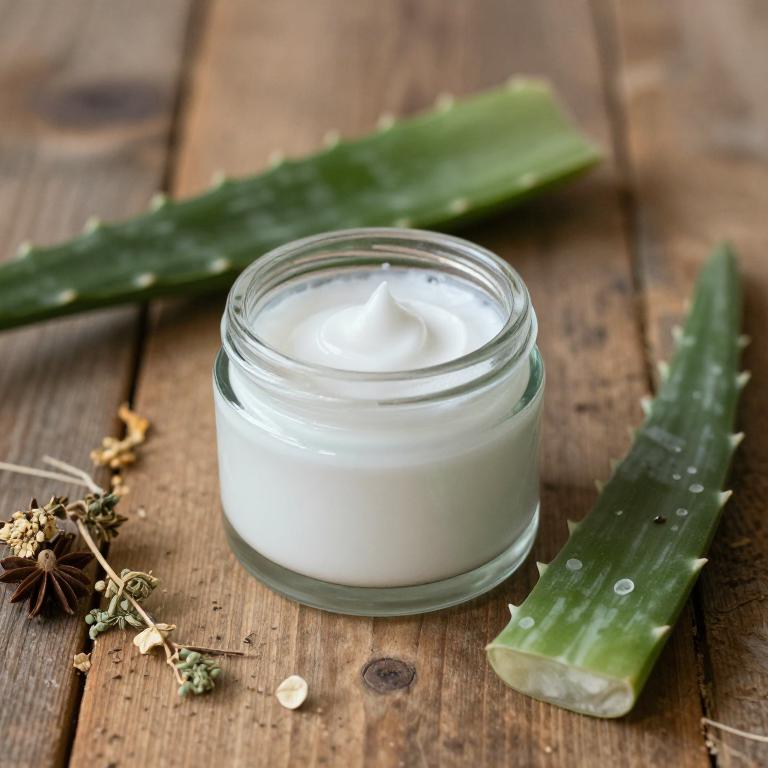
Aloe barbadensis, commonly known as aloe vera, is often used in herbal creams to provide relief from bee sting symptoms due to its anti-inflammatory and soothing properties.
These creams typically contain a concentrated form of aloe gel, which helps reduce redness, swelling, and irritation caused by the venom. The cooling effect of aloe vera can also help alleviate pain and discomfort associated with bee stings. Additionally, aloe-based creams are generally safe for most skin types and can be used as a natural alternative to over-the-counter treatments.
However, it is important to consult a healthcare professional if the sting leads to severe allergic reactions or if symptoms persist.
5. Chamomilla recutita
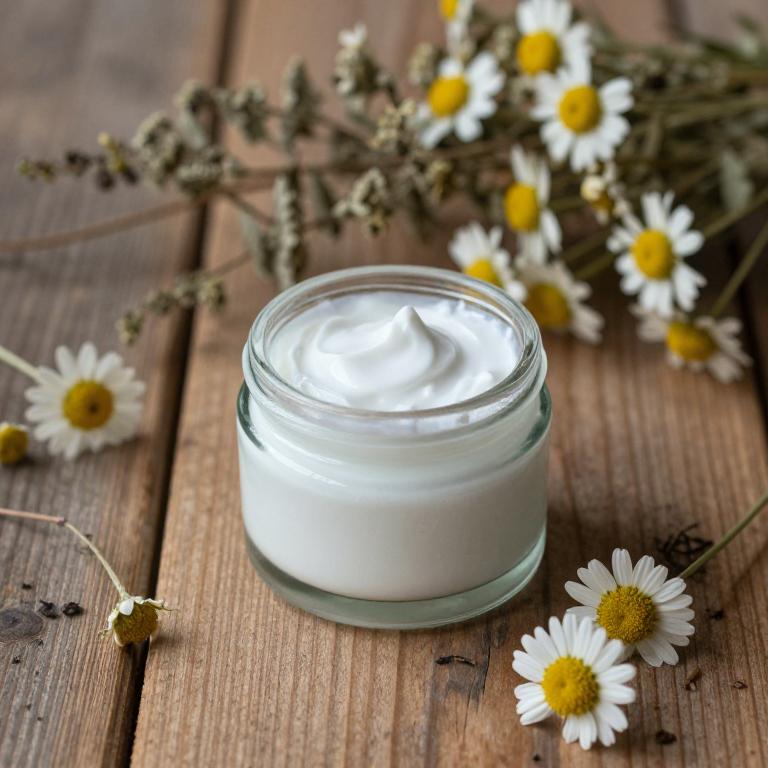
Chamomilla recutita, commonly known as German chamomile, is often used in herbal creams for its soothing and anti-inflammatory properties.
These creams typically contain extracts of the chamomile flower, which are rich in compounds like chamazulene and bisabolol, known for their calming and skin-soothing effects. When applied to bee sting wounds, chamomile-based creams can help reduce redness, swelling, and irritation by calming the inflammatory response. The mild, pleasant scent of chamomile also provides a sense of comfort and relaxation during the healing process.
While not a substitute for medical treatment in severe cases, these creams can be a natural and effective complementary remedy for minor bee stings.
6. Arnica montana
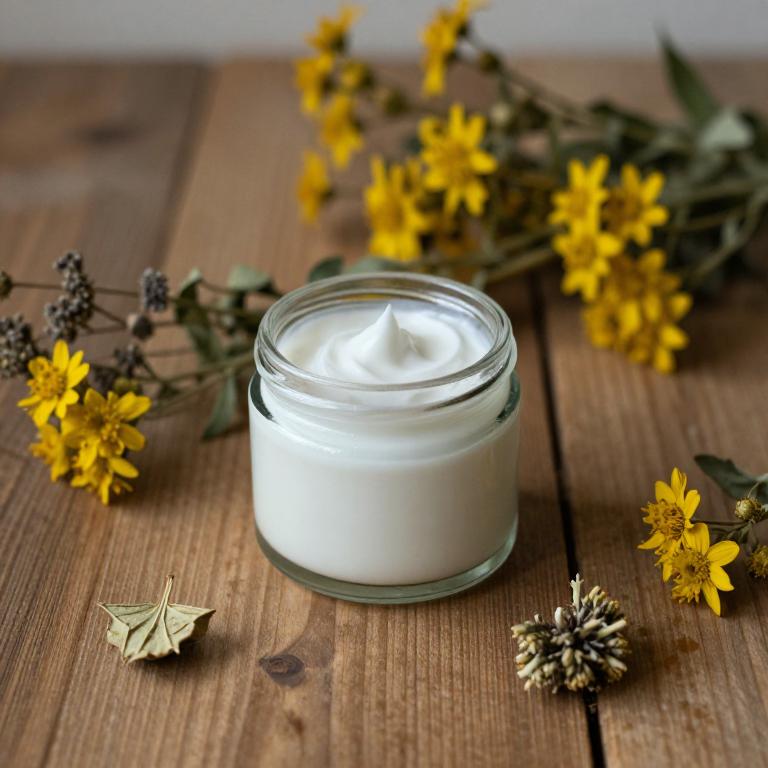
Arnica montana herbal creams are commonly used to alleviate pain and reduce inflammation caused by bee stings.
These creams contain arnica, a plant known for its anti-inflammatory and analgesic properties, which can help ease the discomfort associated with bee stings. They are typically applied topically to the affected area to promote healing and reduce swelling. However, it is important to note that arnica should not be used on open wounds or broken skin, as it may cause irritation.
Always consult a healthcare professional before using arnica-based products, especially if you have a known allergy or are pregnant.
7. Echinacea purpurea
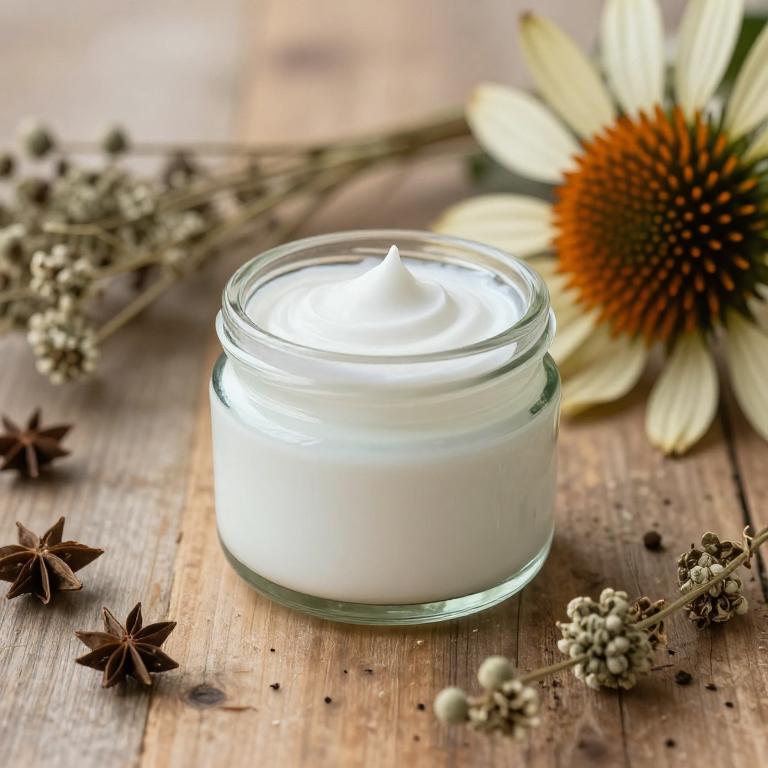
Echinacea purpurea, commonly known as purple coneflower, is a popular herbal remedy often used in the formulation of creams to alleviate the symptoms of bee stings.
These creams typically contain echinacea extracts, which are believed to have anti-inflammatory and antimicrobial properties that may help reduce redness, swelling, and infection risk at the site of the sting. While some studies suggest that echinacea can support the immune system, its effectiveness in specifically treating bee sting reactions remains a topic of ongoing research. When applied topically, echinacea-based creams may provide soothing relief and promote faster healing.
However, individuals should consult with a healthcare provider before using these products, especially if they have known allergies or are taking other medications.
8. Plantago major
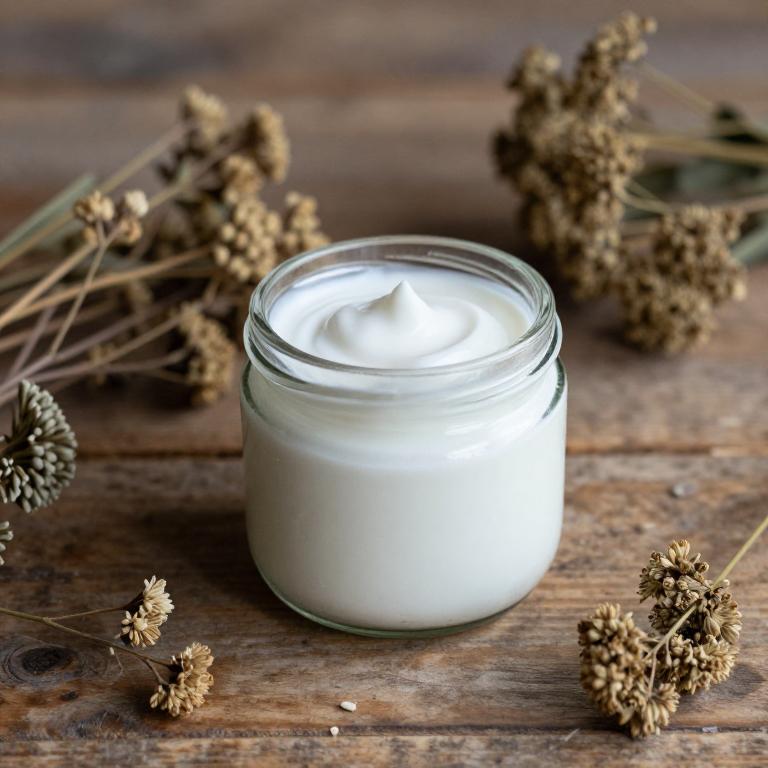
Plantago major, commonly known as broadleaf plantain, is a medicinal herb often used in the formulation of herbal creams for the relief of bee sting symptoms.
These creams typically contain extracts from the leaves of Plantago major, which are rich in anti-inflammatory and soothing compounds such as allantoin and mucilage. The anti-inflammatory properties of Plantago major help reduce swelling, redness, and irritation caused by bee stings. Additionally, the cooling effect of the herb can provide immediate relief and comfort to the affected area.
When applied topically, these herbal creams offer a natural and effective alternative for managing bee sting discomfort without the use of harsh chemicals.
9. Cnicus benedictus

Cnicus benedictus, commonly known as St. Benedict's herb, has been traditionally used in herbal medicine for its anti-inflammatory and soothing properties.
When incorporated into herbal creams, it can help alleviate the pain, swelling, and irritation caused by bee stings. These creams often combine Cnicus benedictus with other calming ingredients like calendula and lavender to enhance their healing effects. The active compounds in the herb, such as flavonoids and tannins, work to reduce inflammation and promote skin repair.
Using Cnicus benedictus herbal creams can provide a natural and effective remedy for those seeking relief from bee sting discomfort.
10. Lavandula angustifolia
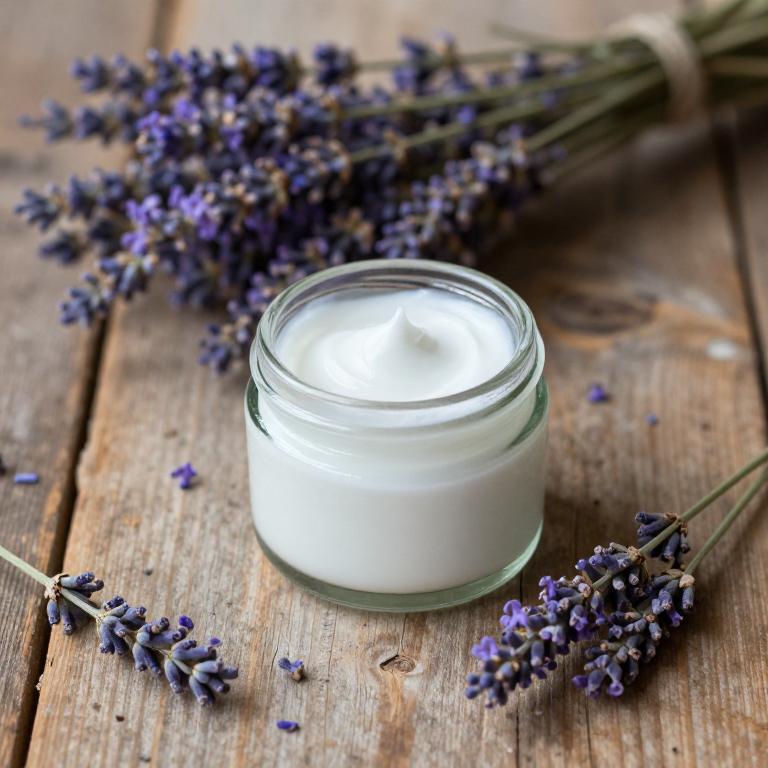
Lavandula angustifolia, commonly known as English lavender, is often incorporated into herbal creams due to its soothing and anti-inflammatory properties.
These creams typically contain essential oils and extracts from the lavender plant, which can help reduce swelling, redness, and pain associated with bee stings. The calming aroma of lavender also provides a relaxing effect, promoting overall comfort during the healing process. Many people find that applying lavender-based creams can accelerate the recovery of bee sting symptoms by soothing the skin and preventing infection.
As a natural remedy, lavender herbal creams offer a gentle and effective alternative for those seeking relief without the use of synthetic medications.